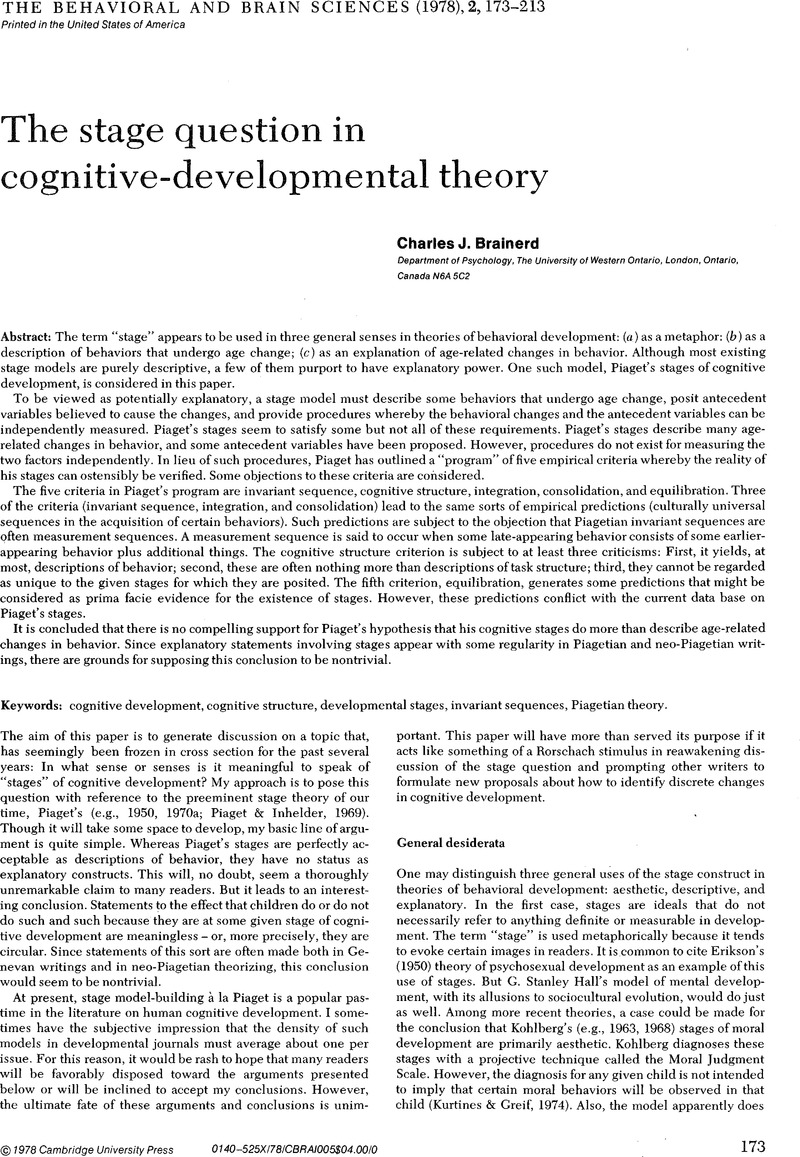Crossref Citations
This article has been cited by the following publications. This list is generated based on data provided by Crossref.
Jerison, Harry J.
1982.
Problems with Piaget and pallia.
Behavioral and Brain Sciences,
Vol. 5,
Issue. 2,
p.
284.
Gibson, Kathleen R.
and
Parker, Sue T.
1982.
Brain structure, Piaget, and adaptatison, or, “No, I think, therefore I eat”.
Behavioral and Brain Sciences,
Vol. 5,
Issue. 2,
p.
288.
Fouts, Roger S.
1982.
Homo does not cogitate because of bread alone: Or, “I eat therefore I think?”.
Behavioral and Brain Sciences,
Vol. 5,
Issue. 2,
p.
283.
Steklis, Horst D.
1982.
Control mechanisms of vocalization and the evolution of speech.
Behavioral and Brain Sciences,
Vol. 5,
Issue. 2,
p.
287.
Gottlieb, Gilbert
Johnston, Timothy D.
and
Scoville, Richard P.
1982.
Conceptions of development and the evolution of behavior.
Behavioral and Brain Sciences,
Vol. 5,
Issue. 2,
p.
284.
Fischer, Kurt W.
1982.
Human cognitive development in the first four years.
Behavioral and Brain Sciences,
Vol. 5,
Issue. 2,
p.
282.



